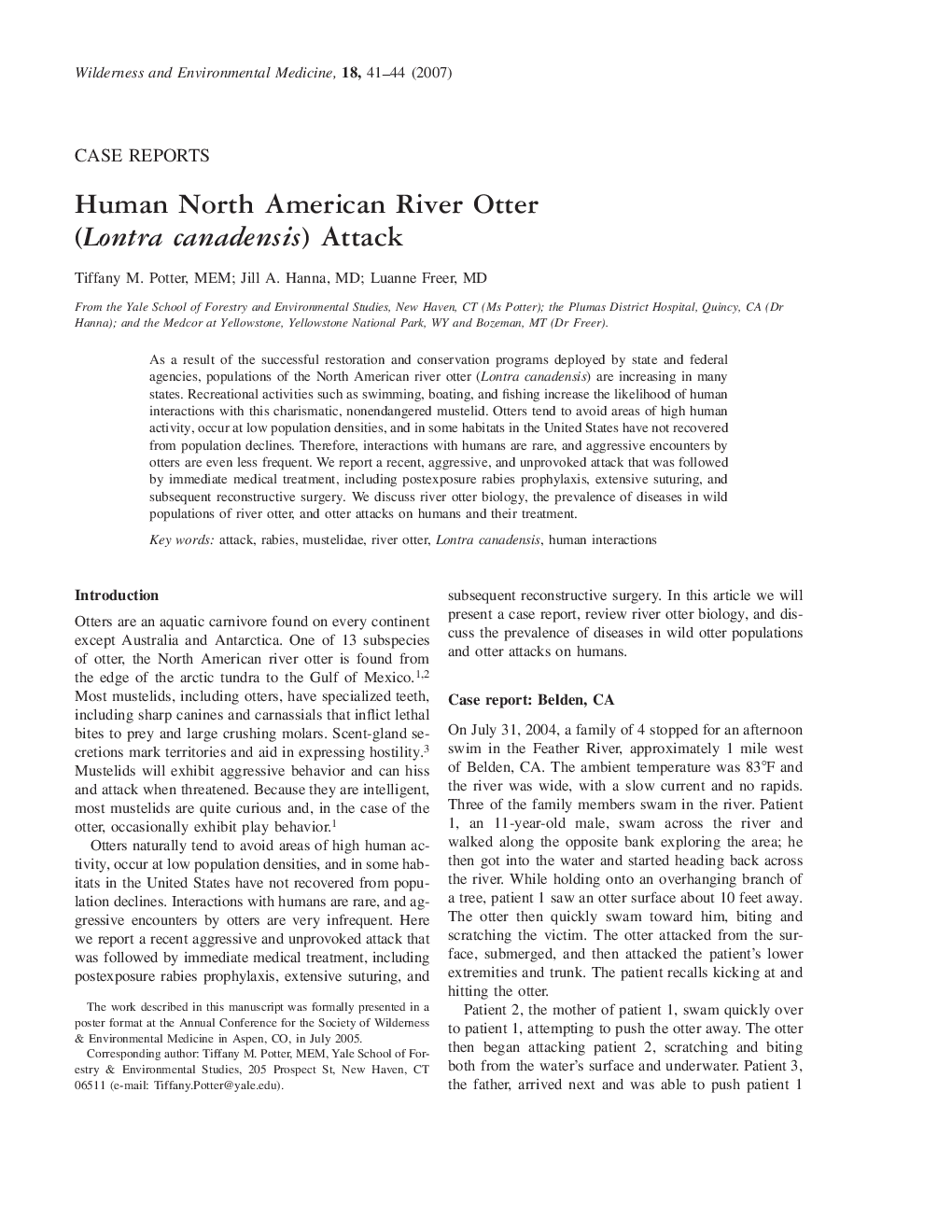| Article ID | Journal | Published Year | Pages | File Type |
|---|---|---|---|---|
| 2615544 | Wilderness & Environmental Medicine | 2007 | 4 Pages |
Abstract
As a result of the successful restoration and conservation programs deployed by state and federal agencies, populations of the North American river otter (Lontra canadensis) are increasing in many states. Recreational activities such as swimming, boating, and fishing increase the likelihood of human interactions with this charismatic, nonendangered mustelid. Otters tend to avoid areas of high human activity, occur at low population densities, and in some habitats in the United States have not recovered from population declines. Therefore, interactions with humans are rare, and aggressive encounters by otters are even less frequent. We report a recent, aggressive, and unprovoked attack that was followed by immediate medical treatment, including postexposure rabies prophylaxis, extensive suturing, and subsequent reconstructive surgery. We discuss river otter biology, the prevalence of diseases in wild populations of river otter, and otter attacks on humans and their treatment.
Related Topics
Health Sciences
Medicine and Dentistry
Emergency Medicine
Authors
Tiffany M. MEM, Jill A. MD, Luanne MD,
